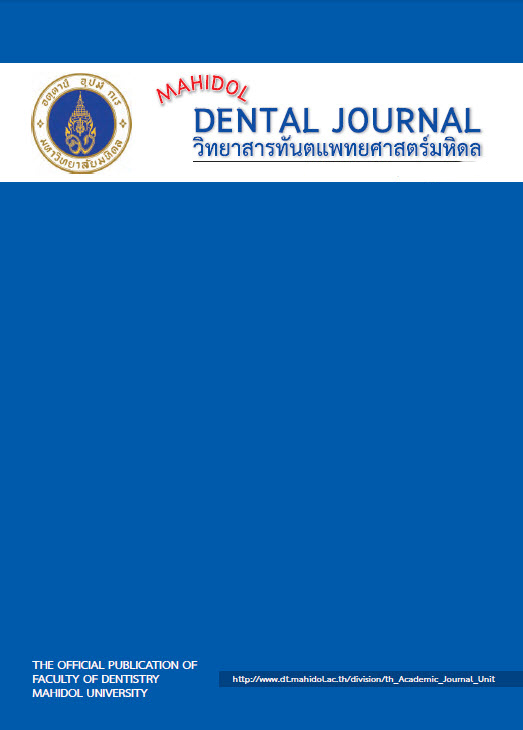Output intensity of LED light curing units over a 4-year period of clinical use
Main Article Content
Abstract
Objective: The aim of this study was to understand the effect of clinical age on the light intensity of different LED curing units. In addition, the reasons for repairs to the units were also identified.
Materials and Methods: The output intensity of LED light curing units was measured using a radiometer at 3 periods of clinical use (0 year, 4 years and 8 years). In addition, information regarding the type of curing unit, the clinical age, and the reasons for and frequency of repairs to the units were collected. Data were analyzed using two-way ANOVA and Duncan’s multiple range test comparison (p < 0.05).
Results: A total of 243 LED light curing units, including 188 (77.37%) Bluephase G2, 16 (6.58%) Bluephase Style, 7 (2.88%) Demi Plus and 32 (13.17%) Elipar S10 units, were examined. At 0 year, the light intensity of nearly all the curing units was not significantly different, except for the Bluephase Style (1,120.87±58.02 mW/cm2) which was significantly lower. Compared with the other curing units, only the intensity of the Elipar S10 at 4 years (1,115.31±52.67 mW/cm2) was less than that at 0 year (1,182.50±58.86 mW/cm2). The intensity of the Bluephase G2 and the Bluephase Style at 8 years (1,102.07±115.01 mW/cm2 and 987.50±107.42 mW/cm2) was reduced significantly when compared with the intensity at 0 year (1,219.63±54.33 mW/cm2 and 1,120.87±58.02 mW/cm2). There was no change in intensity among all periods of clinical use for the Demi Plus. A negative correlation was observed between clinical age and light intensity. In addition, the most common reasons for repair to the curing units included the degradation of the curing tip O-ring and the battery after 7 years of use.
Conclusions: The light intensity of LED curing units was relatively stable at 4 years of clinical use which still had an intensity of more than 1,000 mW/cm2. Furthermore, the light intensity decreased with increased clinical age.


